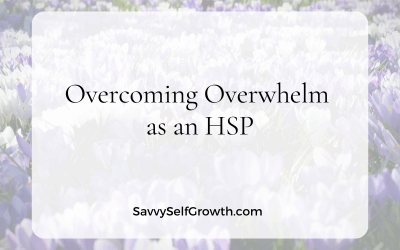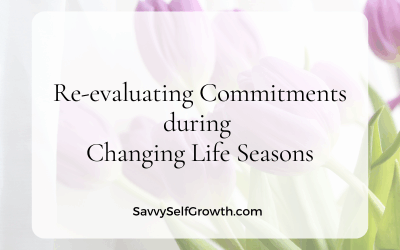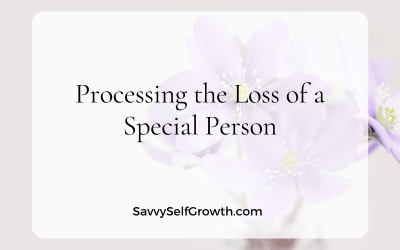“The soul always knows what to do to heal itself. The challenge is to silence the mind.” — Caroline Myss
What do we do when we really want something but there are obstacles in the way of even starting? Here’s an example:
Sally: “I want to get over this issue. But I’m afraid this (EFT / Meta Consciousness / coaching) won’t work for me.”
Or said in another way: “I want this thing. But I don’t know if I’ll get it. So it’ll be easier not to try. I will only start if I know I’ll be successful.”
Does that sound familiar?
You really want to lose the weight, or heal your digestive issue, or stop scrolling so much on social media, or start exercising, or [fill in your own long-standing issue]… but you don’t think it’s possible. You’ve had it for so long, and have tried so many things that didn’t work, that now seems unattainable.
It’s very, very common, dear Reader. I’ve been there, too.
Over the years, I’ve seen at least three different aspects involved here for someone like Sally:
- The belief that it’s possible for anyone to heal/ get over the condition
- The belief that it’s possible for Sally herself to heal / get over any condition problem (there’s often a sense of ‘Nothing ever works for me’)
- The belief that it’s possible for her to get over / heal this condition or problem (a combination of the first two)
What’s underneath that?
We acquire our beliefs about what’s possible for us in a plethora of places.
There’s our personal history and background, and then there are cultural and societal convictions and beliefs. All of them can feel totally like ‘the truth’ for us (even though they’re not true for others).
(1) Our personal experience:
Our subconscious mind stores everything that happened to us before this moment, and it keeps a record of all our apparent ‘failures’. It does this for a good reason: to keep us safe.
Example: Every time Sally tried going on a diet and didn’t lose the intended number of pounds (for whatever reason), it added to the belief that “I can’t lose weight.” The ‘weight’ of the number of failures becomes so heavy that it’s very hard for her to step into yet another promising weight loss program.
Looming failure feels all too real. Why on earth would she want to set herself up for another failure? It’s safer not to.
(2) Cultural/societal beliefs:
From the moment we’re born (before that even) we’re fed statements and ‘truths’ from every angle all day, every day.
Our parents believed certain things, and as children, we had no choice but to believe it too. We heard and saw information that we could not filter out.
Magazines, newspapers, news channels, social media, online articles, books, TV programs, friends, family, church, spiritual organizations, authority figures, teachers, medical personnel…. Every single one of those fed us information which was their truth — and it became ours for our safety and survival.
As small children (before the age of 6), all those pieces of information went in as ‘the truth’. Children up to that age are in a hypnagogic state.
If mom complained about it being hard to lose weight, little Sally had no filters or experience to know whether it was true for everyone, all of the time, or just for mom, this time… so her little developing brain hears that as ‘the truth’ and that may become Sally’s truth, too.
And so it goes for all the programming we receive from others, along the way.
(3) Diagnoses and Dr Google Shock
In many households, children are taught from an early age to respect medical opinions. If the doctor says, “You have such and such a condition, and there’s nothing we can do, no cure, we will just manage the symptoms”, we take that for the truth.
We’re in a vulnerable, shocked state when we hear news about our health… and again, what is said at that moment (in a shocked, frozen, fearful state) goes into the subconscious mind as ‘the truth’.
When we read Dr Google about our health condition, it can create so much additional fear. Yes, the information can be helpful to find out more about a condition. And, I have more often seen how it induces fear, terror, anxiety and hopelessness. Again — in that state of mind, all that stuff goes in as “I’ll never get over this, it says so here in black and white. It’s printed. It must be true.”
There are so many examples of programming we contend with before we even start on a healing journey. I’m sure you’re starting to get the picture. All of it leads to beliefs about what’s possible for humans in general, and for us as an individual.
And another thing: Quickly, please!
Usually, when a client like Sally arrives with a condition they’ve had for a while, it’s at the point where they’re desperate for change. They’ve tried all the routes so far. Self-help, crystals, writing a letter and burning it, cutting cords, the medical route, diets of all kinds, naturopaths, homeopaths, exercise, massage, physiotherapy, chiropractic, energy healing … and still, the issue stubbornly persists with small patches of relief.
It would be completely understandable that this poor soul wants something that shifts the condition fast. They’re desperate for relief and a miracle would be very welcome! Expectations are high — “Can you do this quickly please?” is an unspoken expectation.
What do I tell Sally about this expectation?
First, I’m not a healer — all healing is self-healing, and she needs a willingness to explore the factors that contributed.
And second, this is a huge amount of pressure for us to sit with. In every session, she’ll expect a miracle and be disappointed if it doesn’t happen. It’s also a lot of undue pressure for the practitioner — who usually has experience with longstanding conditions and knows Rome (the condition) was not built in a day.
Third — pressure and stress are not great healing foundations and companions. It shifts us into the stress response again, where the body cannot do its healing work.
Where do we Start?
So guess where we start, despite the pressure and desperation for instant relief?
It’ll be of very little use to start working on the issue (e.g. a liver condition, losing weight, or a relationship pattern), if Sally still believes,
“It’s impossible for me to get over this.”
A belief like that is like a massive boulder on the path to her healing. We simply can’t start working on the condition and underlying root causes until this boulder is out of the way.
So that’s where we start.
We first work on the belief that it’s possible for her, for any human, to overcome this condition. And we do that in a variety of ways.
We look for where and how she learned what’s possible. Who told her she can’t heal this? What has she heard or read? What has the doctor or other authority said? What did mom say? What experiences has she had to ‘prove’ that she can’t?
We’ll work through those systematically with EFT (tapping) to clear the emotional attachments to all or many of those. What we need is an opening in the dense forest of ‘it’s not possible’. We start carving a little pathway over, or through that boulder — so we can get to the root cause of the condition.
Then, there is an additional element I’d like to bring in here to round out the picture.
The Six Stages of Change
There’s a beautiful model that describes the stages of change that humans go through before they are ready to make a change. Healing something like a health condition or cultivating new habits will inevitably mean change. And that is one of the things that most humans are not very fond of. Our brains and nervous systems are energy-saving mechanisms and prefer things to stay the same — so we can do things on automatic pilot, and not spend unnecessary energy.
There are six Stages to the change process. I’ll name them briefly.
The Six Stages:
One: Pre-Contemplation: I’m not even considering working on this issue. People say I have a problem, but that’s their problem!
➡️ Two: Contemplation: I’m thinking about working on this issue but it feels so unsafe! What if it doesn’t work? I need certainty! People can be stuck in this stage for years.
➡️ This is the stage where the beliefs are sitting: “I’m not ready, I can’t do it, it won’t work, nothing works for me, I need to know it will work before I start, other people can do it but I can’t. It’s not safe to work on this. It’s too complicated. It’ll take too long.”
Three: Preparation: Starting to put things in place to make it possible to step into it. Searching out a coach, paying for a program.
Four: Action: Making the changes. Different eating habits, going to bed earlier, drinking more water, working with an EFT (or other) coach, doing what’s required. There can still be hesitance but we’re taking action! So EFT is still useful for every step we take.
Five: Maintenance: Ooh, this is going well, I’ve nailed it. Coasting along.
Six: Termination. The change is complete. I no longer have the problem.
or Relapse: Oh dear, I’ve relapsed, I’ve gone back to my old self!
Then, we can go one of two ways: Get back on the horse and go back to one of the previous phases (Contemplation, Preparation, Action), or proclaim it ‘Yet another failure’, and give up.
How can EFT help?
What we can do with EFT is move us one stage further along, no matter where we are in the Stages of Change Model.
We cannot always start with the full belief that healing is possible for us, and that’s okay. We start where we are, and we work on those beliefs/thoughts that are keeping us from moving forward with our healing plan. EFT is marvellous and very gentle with that.
There’s no judgment for any of these stages. They’re there for every human being, regardless of the topic. Some of us move through them faster or slower than others. That’s okay. We’re each unique with our own history that shaped us into the way we are today.
EFT helps us clear the way to get closer to the Preparation, Action and Maintenance stages, and it also helps us to get back on the horse in the Relapse stage.
Check for yourself:
If you’re battling with a condition and want to work on it, check where you are on the belief-scale. Whether it’s about your health, money, relationship issue, habits, state these sentences and rate how true they each feel (True = 10, False = 0):
- It’s possible for anyone (others) to get over / heal this.
- It’s possible for me to get over / heal this.
- I can get over this.
- I deserve to get over it.
- I will know who I am without this issue.
- It’s 100% safe to get over this.
Then ask yourself:
Who told me? Where did I learn that? What experience(s) taught me that? (The answers will not be logical. That’s normal.)
Now, you have a ‘tappable issues’ as Gary Craig (creator of EFT) used to say. And you can use those as targets for EFT to discharge the emotions and attachments to those.




